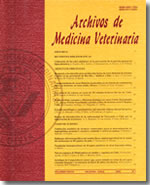Use of anionic salts for the prevention of milk fever
Main Article Content
Abstract
Milk fever is one of the most common metabolic diseases of dairy cattle. Of the various methods used in attempting to control the disease, most progress has been made in terms of dietary management. Many authors have shown that adding anionic salts to a ration has dramatic effects on the incidence of milk fever. Anionic salts are added to the diet of dry cows 2-3 weeks before calving in order to achieve metabolic acidosis. The exact mechanism of how dietary anions work is still unresolved. Previous reports suggested that metabolic acidosis induced by anionic salts increases tissue responsiveness to parathyroid hormone, ameliorates the absorption of calcium in the intestine and enhances calcium resorption from bone. In this work, we review the concept of dietary cation-anion difference (DCAD) with special emphasis on the physiologic effects this can have on acid-base status, bone resorption, renal production of 1,25 (OH)2 D3 and resorption of calcium, and intestinal absorption of calcium in cows.

